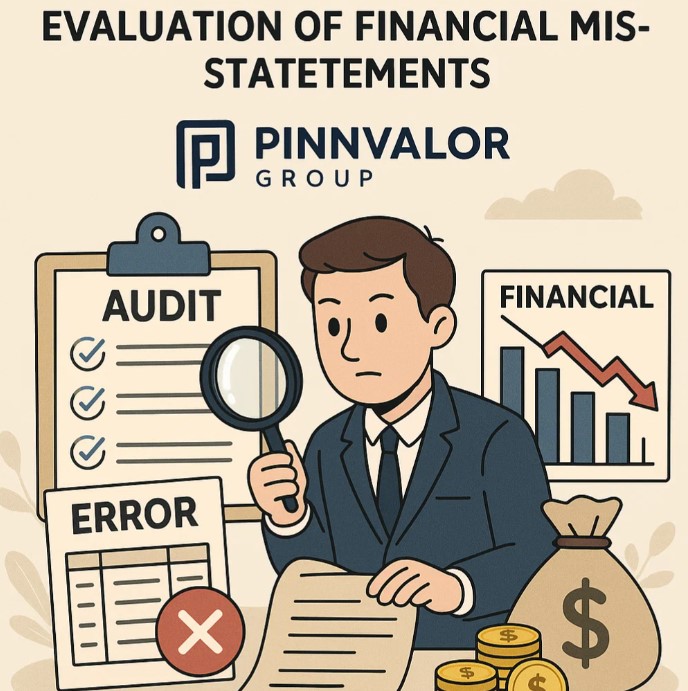
SA 450 – Comprehensive Evaluation of Financial Misstatements
In the world of auditing, accuracy is non-negotiable. Even a small oversight in financial reporting can change the way stakeholders perceive an organization’s performance and position. SA 450 – Evaluation of Misstatements Identified During the Audit sets out the auditor’s responsibility to assess and determine the impact of misstatements before forming an audit opinion.
This standard ensures that financial statements reflect a true and fair view—free from material misstatement—so that decision-makers can rely on the information presented.
What happens when management refuses to fix detected errors?
Accuracy in financial reporting isn’t optional. SA 450 safeguards the trust between companies and stakeholders.
Understanding SA 450
SA 450 provides guidance for auditors to:
- Identify misstatements during the audit process.
- Accumulate all such misstatements, except those that are clearly trivial.
- Evaluate the nature and magnitude of misstatements in relation to materiality.
- Decide whether corrections are necessary to ensure accurate reporting.
The standard applies throughout the audit—from the planning stage to the final opinion—ensuring that all potential errors are considered holistically.
Types of Misstatements
Misstatements can arise from error or fraud and are broadly classified into three categories:
- Factual Misstatements – Clear, verifiable errors such as incorrect amounts, wrong calculations, or misclassification in the financial statements.
- Judgmental Misstatements – Arising from management’s unreasonable accounting estimates or inappropriate accounting policies.
- Projected Misstatements – Estimates of misstatements in an entire population, based on audit sampling results.
The Evaluation Process under SA 450
1. Accumulating Misstatements
Auditors should record and accumulate all identified misstatements—excluding those that are clearly trivial—to evaluate their combined effect.
2. Reassessing Materiality
Materiality thresholds set at the planning stage are reconsidered during the final evaluation to reflect updated knowledge of the entity’s financial performance and position.
3. Considering Qualitative Factors
Even small misstatements can be material due to their nature, such as:
- Impact on compliance with laws or regulations.
- Effect on loan covenants or contractual agreements.
- Influence on management compensation or bonuses.
4. Communicating with Management
Auditors must communicate all detected misstatements to management and request corrections. Where management refuses, the reasons must be documented.
5. Final Evaluation
Before issuing the audit opinion, the auditor considers whether:
- Uncorrected misstatements, individually or in aggregate, are material.
- The financial statements as a whole remain free from material misstatement.

Impact on Audit Opinion
The outcome of the evaluation determines the form of the audit opinion:
- Unmodified Opinion – When misstatements are immaterial.
- Qualified, Adverse, or Disclaimer of Opinion – When uncorrected misstatements are material and management refuses to adjust.
Why SA 450 Matters
- Protects Users of Financial Statements – Ensuring they make informed decisions based on accurate data.
- Strengthens Audit Quality – Promotes consistency in evaluating misstatements.
- Enhances Accountability – Encourages management to maintain integrity in financial reporting.
Conclusion
SA 450 – Comprehensive Evaluation of Financial Misstatements is not just a compliance requirement—it’s a safeguard for transparency and reliability in financial reporting. By systematically identifying, accumulating, and evaluating misstatements, auditors uphold the trust placed in their work, ensuring that financial statements truly reflect reality.
